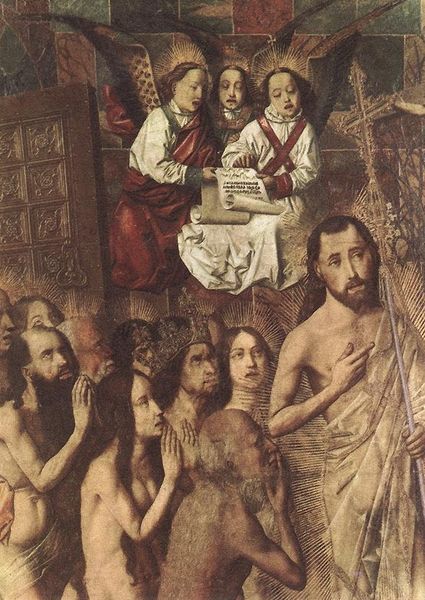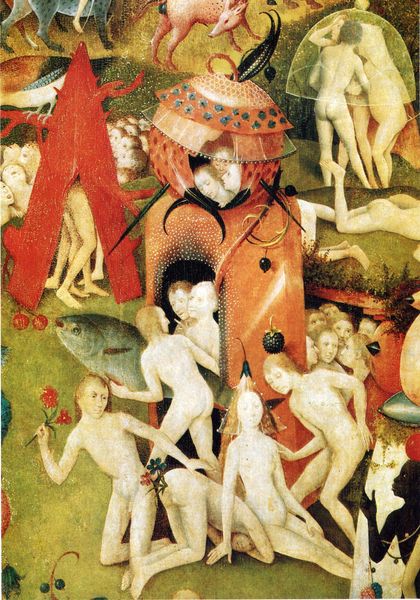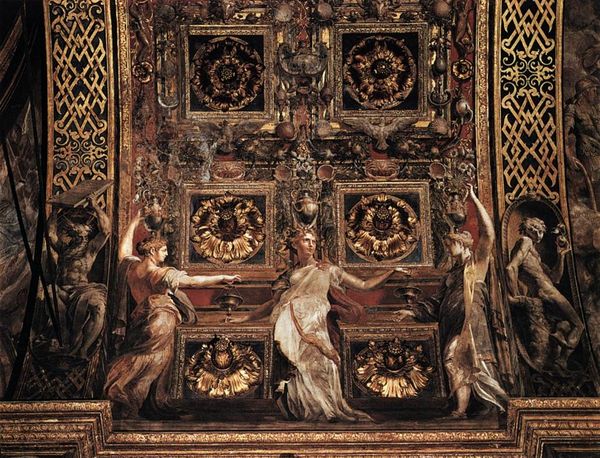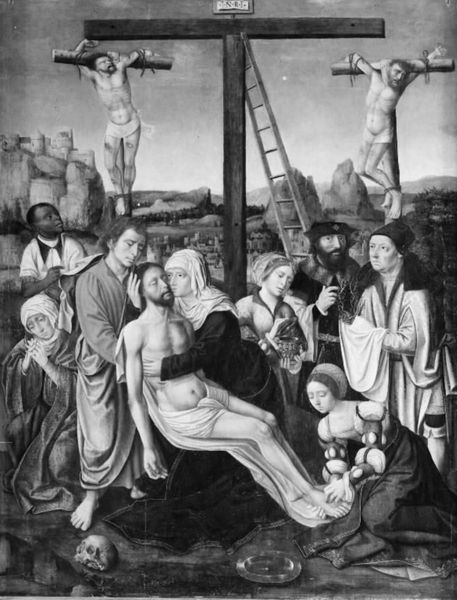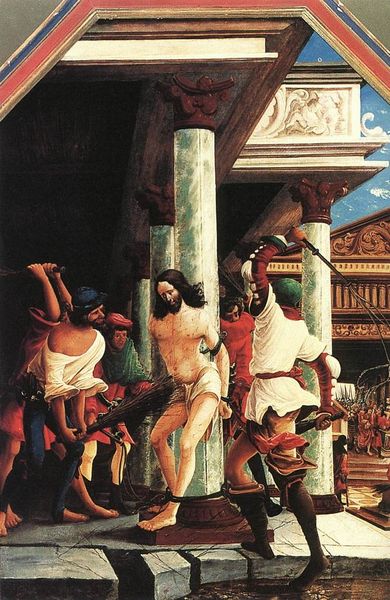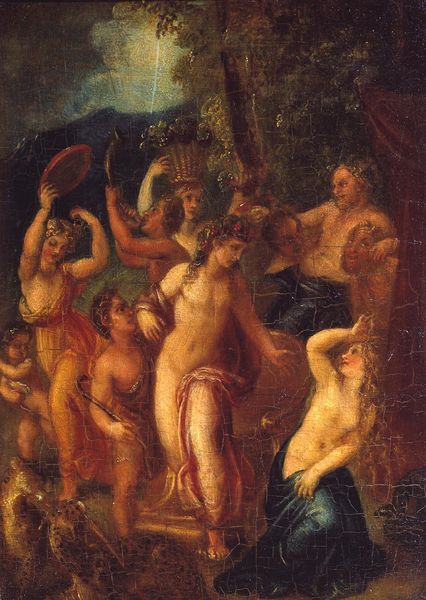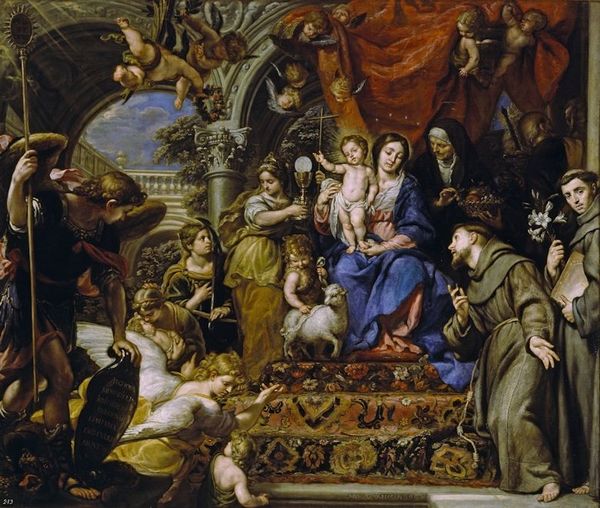
tempera, painting, oil-paint, fresco
#
portrait
#
narrative-art
#
tempera
#
painting
#
oil-paint
#
figuration
#
fresco
#
oil painting
#
mythology
#
genre-painting
#
history-painting
#
academic-art
#
italian-renaissance
Copyright: Public domain
Curator: Ah, this strikes me as a slightly awkward party. The light's strange, like old bulbs struggling to turn on in my grandma’s musty attic. Editor: That’s a rather interesting read, and it takes me in an unforeseen path; what are some clues to back it up?. For our listeners, this is "Christ Leading the Patriarchs to the Paradise," painted around 1480 by Bartolome Bermejo. The work seems to employ both oil paint and tempera, offering a detailed examination of faith. Curator: You got the artist and title down, alright. Tempera and oil… a material negotiation to achieve that luminous yet earthen quality. And those Patriarchs! Trailing after Christ like they are unsure if the promise of "Paradise" includes adequate snacks. The palette itself is intriguing - faded ruby reds mixed with an array of aged clay hues Editor: Precisely. This work reveals much about workshop practice in late fifteenth-century Spain. Oil paint permitted hyper-realism, and also a global economy based around its constituent elements - oil, pigment, wood panel production. What does this assembly of materials signal about shifting trade relationships? Curator: Trade relationships, perhaps the original 'follow the money' but… I'm more caught up with what those resurrected are hauling with them, internally of course. Each individual renders that emotionality vividly: some hopeful, some filled with trepidation, a couple straight up grumpy as all heck! Editor: It speaks to a very human struggle, as painted on the historical canvas; which elements capture the mood in such a manner? Curator: I'd call it less struggle, and more contemplation. Like they had something particular back home which has suddenly appeared within vision while taking their place in eternity. But Bermejo also crafts the painting in the very traditional art practice: it creates meaning just as readily through composition and material richness and the way these interact to craft an emotional landscape; this may say a lot more about a shift than just its elements! Editor: That tension is, for me, key, revealing that artistic choices carry deep historical context and can be evaluated from several angles. So next time you gaze into those ancient eyes, ask not just 'what are they feeling?' but also, 'what story do those pigments and brushstrokes have to tell about labour, material and life at the time?'
Comments
No comments
Be the first to comment and join the conversation on the ultimate creative platform.
